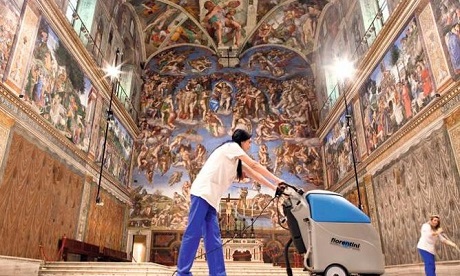Pay cuts at the Vatican will see cardinals working at the Holy See taking a 10 per cent pay cut. Most other Vatican-based clerics’ salaries are also being reduced.
Department heads and secretaries will have their salaries reduced by eight percent and clergy and religious by three percent.
In addition, almost all employees will have automatic seniority pay increases frozen until 2023,
Pope Francis ordered the cuts to save lay employees’ jobs.
The Vatican says Francis issued a decree introducing proportional cuts starting on from 1 April.
Most lay employees would not be affected by the cuts.
This is thought to be the first time in living memory that a pope had taken such action.
Explaining why action is needed now, Francis said the pandemic “has negatively affected all the sources of income of the Holy See and the State of Vatican City.”
While both currently had “adequate capitalisation,” Francis said he felt the duty to guarantee “sustainability and equilibrium between income and expenses” in the current economic climate.
“A sustainable economic future requires today, among other decisions, adopting measures that also concern employee salaries,” Francis said.
The pay cuts are included in these measures.
Francis comes from a working class family. He has often insisted he does not want to reduce staff in difficult economic times, even as the Vatican continues to run up deficits.
Cardinals who work and live in the Vatican or in Rome are believed to get salaries of about US$4,730 to US$5,915 a month. Many live in large apartments at well below market rents.
In addition, most priests and nuns who work in Vatican departments live in religious communities in Rome. These communities give them greater protection from economic downturns.
Their living expenses are much lower than lay employees’ who live in Rome. Many of whom have families.
It is these lay workers the pope is protecting.
The Vatican’s top economic official said earlier this month that the Holy See, the central administrative body of the worldwide Catholic Church, may have to use US$47 million in reserves for the second straight year as the COVID-19 pandemic burns through its finances.
Holy See’s income is from donations, real estate management and investments. It expects a deficit of about US$60 million euros this year.
Revenues are expected to be about US$250 million in 2021, down 30 per cent from 2020.
Source
- La Croix
- National Post
- Image: Fiorentini
